For years, scientists believed the first humans arrived in Europe through the Mediterranean. But a groundbreaking discovery at Korolevo, Ukraine, is challenging that view. Using a “cosmic clock” to date ancient stone tools, researchers have confirmed human presence 1.4 million years ago, making it the earliest known site in Europe. This finding reshapes our understanding of migration, suggesting early humans moved from east to west rather than south to north. How did they survive, and what does this reveal about human history? Let’s explore the evidence.
The Korolevo Archaeological Site
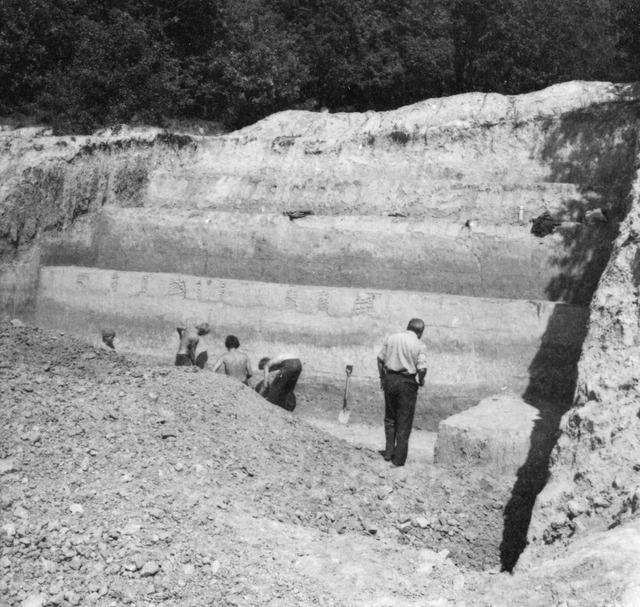
The Korolevo site is located in southwestern Ukraine, near the borders of Hungary and Romania. Discovered in the 1970s, the site was initially estimated to be 800,000 years old, but recent dating methods have pushed its timeline back another 600,000 years. This makes Korolevo a key site in understanding early human migration and one of the oldest prehistoric sites in Europe.
Excavations have uncovered a staggering 90,000 stone tools, indicating that early humans occupied this site for an extended period. The tools, made from locally sourced volcanic rock, suggest that these hominins had advanced survival skills, crafting cutting and scraping instruments essential for food preparation, hunting, and protection.

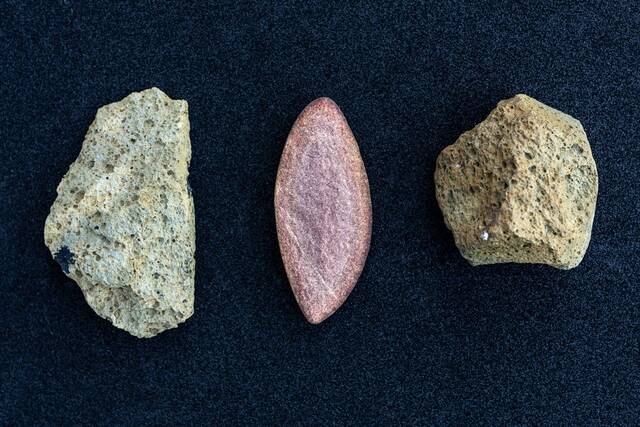
Despite the abundance of artifacts, no human fossils have been found. The region’s open-air environment and acidic soil likely caused organic materials to decompose over time, leaving only stone tools as evidence of human presence.

Video
Watch the video to uncover the discovery of million-year-old stone tools in Ukraine, once used by ancient humans. This find is rewriting history!
Dating the Earliest Human Presence in Europe
How the ‘Cosmic Clock’ Works: Understanding Cosmogenic Nuclides

Dating sites as ancient as Korolevo requires more than traditional techniques. Scientists used a process known as cosmogenic nuclide dating, which measures isotopes created when cosmic rays interact with rock surfaces. When rocks are exposed to the sky, they accumulate radioactive isotopes. Once buried underground, these isotopes begin to decay at a measurable rate, allowing scientists to determine how long the artifacts have been hidden beneath the surface.
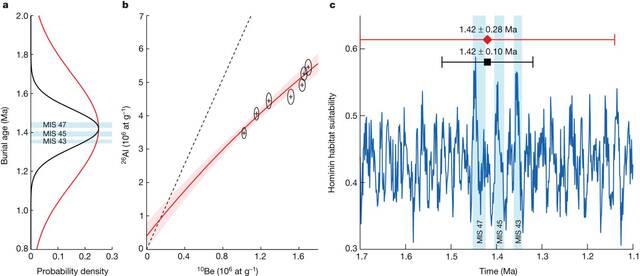
Aluminum-26 and Beryllium-10: Unlocking the 1.4-Million-Year Timeline

At Korolevo, researchers analyzed quartz grains found in the same layer as the stone tools. By measuring aluminum-26 and beryllium-10 isotopes, they determined that these materials had been buried for 1.4 million years—a groundbreaking discovery that extends the timeline of human occupation in Europe by hundreds of thousands of years.
This finding provides critical evidence of human expansion into higher latitudes earlier than previously believed, filling an important gap in the story of hominin migration.
Who Were the First Europeans?
Although no human fossils have been found, researchers believe the most likely inhabitants of Korolevo were Homo erectus. This early human species, which first appeared around 1.8 million years ago, was the first hominin to leave Africa and adapt to various environments. Fossils from Dmanisi, Georgia—dating to 1.8 million years ago—support the theory that Homo erectus reached Eurasia long before the first modern humans.
Comparing Korolevo with Other Key Sites (Dmanisi, Atapuerca):
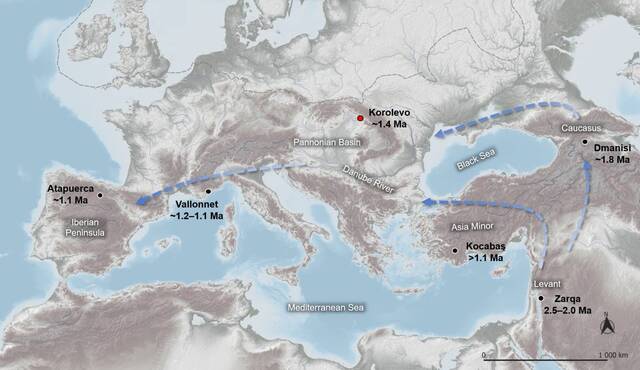
- Dmanisi, Georgia (1.8 million years ago): The oldest known hominin fossils outside Africa.
- Korolevo, Ukraine (1.4 million years ago): The oldest known human presence in Europe based on stone tools.
- Atapuerca, Spain (1.1 million years ago): The oldest confirmed human fossils in Western Europe.
These discoveries suggest that early hominins spread into Europe from the east rather than the Mediterranean route, as was previously believed.
Unlike cave sites where fossils are well-preserved, Korolevo’s open-air environment and acidic soil make fossil preservation unlikely. This raises the question: Were these early humans permanent settlers or seasonal visitors?The presence of large numbers of tools suggests they returned to the site multiple times over thousands of years.
Migration Patterns and Climate Influence

East-to-West Movement: Rethinking Early Human Expansion into Europe
Korolevo’s age and location provide compelling evidence that early humans migrated into Europe from the east, rather than the traditionally assumed route through southern Europe and the Mediterranean. This discovery suggests that early hominins could adapt to a wider range of climates and environments than previously thought.
How Climate and Ecosystem Shaped Early Migration Routes
The tools at Korolevo date back to a warm interglacial period, when temperatures were higher than today. Pollen analysis suggests the region was heavily forested, providing a stable ecosystem for food and resources. This likely made it easier for early humans to move northward and establish new settlements.
The Role of the Tisza River and Available Resources
Korolevo’s proximity to the Tisza River, which flows into the Danube, provided a reliable source of water, food, and raw materials for stone tools. This natural corridor may have played a crucial role in early human migration, guiding hominins westward into Europe.
Stone Tools: A Glimpse into Early Human Innovation
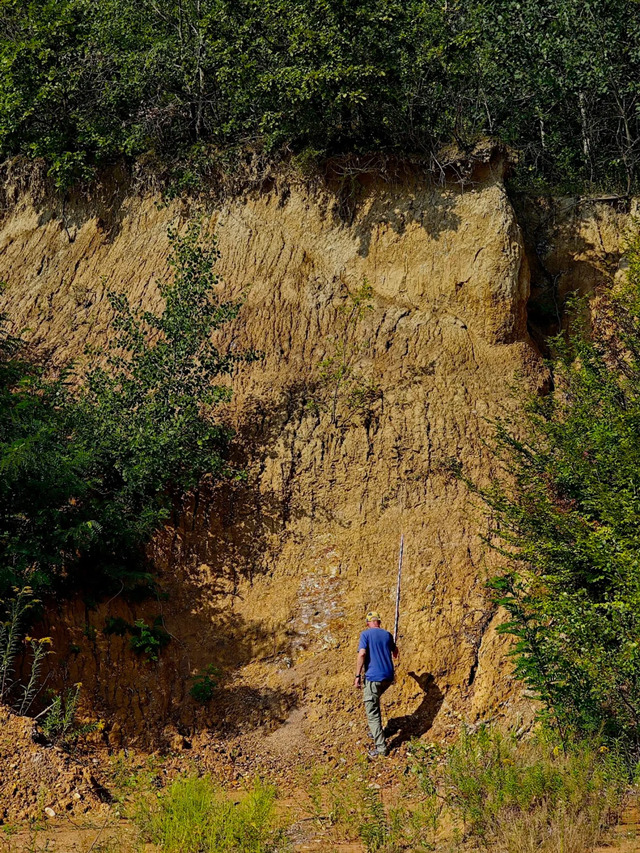
The discovery of 90,000 tools highlights the critical role of technology in early human survival. These tools would have been used for cutting meat, preparing hides, and processing plants, demonstrating an advanced understanding of resource use.
The tools resemble those found at Dmanisi, Georgia, supporting the idea that the same early human populations moved across Eurasia. Their design suggests that early hominins were skilled in selecting the best raw materials for toolmaking.
Challenges and the Future of Research

Ongoing conflict in Ukraine has made further excavation at Korolevo difficult and dangerous. Many researchers have limited access to artifacts, making additional studies challenging.
Despite these obstacles, international archaeologists hope to continue investigating Korolevo to find additional layers of stone tools, animal remains, or possibly human fossils that could further confirm who the toolmakers were and how they lived.
Future excavations could help answer critical questions, such as:
- Did early humans live at Korolevo permanently or seasonally?
- What animals did they hunt and eat?
- Were they the first hominins to reach this region?
Conclusion
The Korolevo site is a game-changer in our understanding of early human migration. The discovery of 1.4-million-year-old stone tools provides the oldest evidence of hominin presence in Europe, challenging traditional theories of migration and adaptation.
While many questions remain, Korolevo bridges a crucial gap in early human history. As future excavations continue, this site may unlock even more secrets about Europe’s first inhabitants, offering deeper insights into how early humans conquered new landscapes and survived against all odds.
For now, the cosmic clock has revealed a new chapter in human history—one that stretches further back in time than we ever imagined.
Video
Check out the video to learn about the oldest known stone tools, discovered to be 3.3 million years old, in this National Geographic feature. It’s a groundbreaking archaeological discovery!



